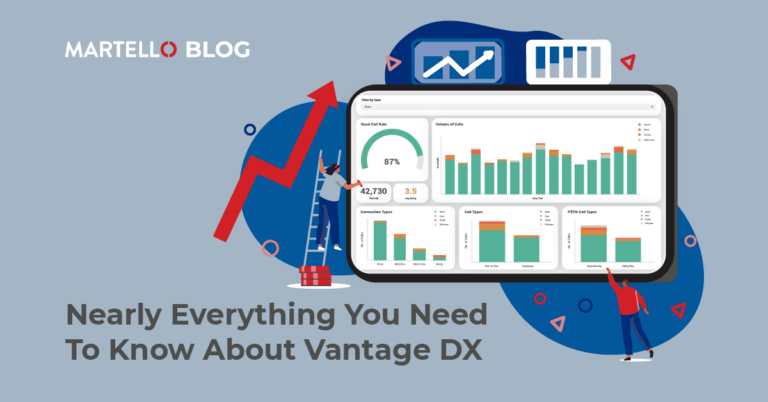The ROI of Digital Experience Monitoring
Microsoft Office 365 Performance
In business, it’s important to ensure that you are getting the most out of the tools that you are paying for. If it’s a monitoring service, the data you collect should give you actions to help improve incident management by identifying the root cause of user issues faster. Assessing the return on investment (ROI) for all of the tools you use in your IT department is an essential step for improved efficiency and adoption of applications.
While making the justification for a Digital Experience Monitoring solution may seem challenging at first, the ROI can be easily understood- and it all comes back to user experience.
Bridging the IT Monitoring Visibility Gap with Digital Experience Monitoring
You invest a lot in your monitoring tools. And they are great in what they do. They monitor availability and performance of their portions of the application delivery network. They notify IT when response time is slow, when packets are dropped or there’s an availability issue. All of these problems affect end user experience. The problem is that these products don’t actually measure user experience itself. Monitoring tools only infer user experience through latency, errors and alerts. The data collected by monitoring tools don’t represent what users actually see. This creates an IT monitoring visibility gap where everything can be showing as green on your monitoring tools, but users are still complaining of issues. This gap exists because you can’t monitor actual end-user experience through these basic monitoring tools.
This visibility gap creates pain points for IT and the business as a whole. These challenges include:
- Being Reactive Instead of Proactive
- Spending too much time validating user complaints about problems – ever been to a mechanic when they can’t replicate the problem!?
- The Blame Game- who is responsible for the issue?
- Difficulty Meeting SLAs
- Poor Perception of Service
- Poor Insight into IT’s impact on workforce Productivity
- Reputations suffer when internal and external customers feel like IT is constantly caught by surprise by their complaints.
Addressing these issues really drives up the ROI of your Digital Experience Monitoring solution.
Multiple, Disjointed Tools is Ineffective to Manage the Digital Experience
Many companies ask themselves, “do we really need yet another monitoring product?” This is a fair question to ask. The reality is that most businesses use a multitude of tools to monitor and troubleshoot their networks. All these siloed, domain specific monitoring tools create a gap in IT monitoring visibility. They tell the IT team when response time is slow, when there are too many errors or dropped packets, or when there’s an availability issue. All these problems affect the user experience, but these products don’t measure actual user experience. The cost of a negative user experience adds up through decreased productivity, employee frustration and lost revenue. Putting a price on the value that Digital Experience Monitoring (DEM) brings to your business makes it easy to see the return on investment.
“The Blame Game”
When an end user experiences problems with their service, they blame the service provider or enterprise. The service provider is not always responsible for the issue, as it often is related to the end user. These issues could include:
- User has low bandwidth due to poor WiFi
- User has congestion on local network
- User has misconfigured DNS
- User’s ISP has high latency or congestion
- User is taking a sub-optimal path to the service (e.g. misconfigured Azure routing table)
Both the Service Provider and the Enterprise carry a high stake in the “Blame Game” when it comes to resolving end user issues. The Service Provider is responsible to answer the calls of end users and deploy advanced troubleshooting to “prove” that the issue is not on their end. Without a remote access solution or on-site troubleshooting this requires a lot of time and comes at a high cost to the Service Provider. The Enterprise has the need to quickly resolve the end user problems in order to ensure business continuity. Being able to pinpoint the root cause of the issue is essential for effective incident management.
With a Digital Experience Monitoring solution in place, both the Service Provider and Enterprise can deliver a better customer experience by having informed answers to user-reported problems with services, with the help of proactive monitoring data. This saves the Service Provider and Enterprise both time and money by eliminating costly trouble shooting and lost reputation with end users.
Service Desk Improvements and Productivity Enhancements Through Digital Experience Monitoring
Improvements to the Service Desk is a key area to identify ROI on your Digital Experience Monitoring solution. With a Digital Experience Monitoring tool in place, the IT team can be alerted to issues that are happening in the environment. They are able to offer reactive support by pinpointing the root cause of any given issue through the data they are collecting with their monitoring tools. These alerts can also help them prioritize the issues that have a greater business impact, saving the business money in the long-run. The ROI of Digital Experience Monitoring for reactive support includes an improved mean time to resolution (MTTR), IT support time (wages), productivity impact caused by IT issues from workers (revenue). Digital Experience Monitoring solutions also offer Service Desk improvements with proactive support. Using tools that complete synthetic transactions, IT teams will know where an issue occurs before it impacts an end user. With Digital Experience Monitoring tools that perform these functions, the ROI is the result of no downtime for any end users, which results in business continuity and a positive user experience.
One of the biggest values of a good digital experience monitoring solution is the productivity gains created when a number of hours are saved from being wasted due to IT issues. That’s when understanding what the cost of downtime really means. Take a moment and calculate the cost of downtime related to IT issues, the number may surprise you!
Adding Up the ROI of Digital Experience Monitoring
By capturing the full picture on the user experience, you are able to offer proactive and reactive support when it starts to deteriorate. Digital Experience Monitoring gives IT teams the ability to detect, pinpoint and repair issues faster and more efficiently. The ROI on Digital Experience Monitoring can be added up through time savings, productivity enhancements and a stellar reputation for service quality.


